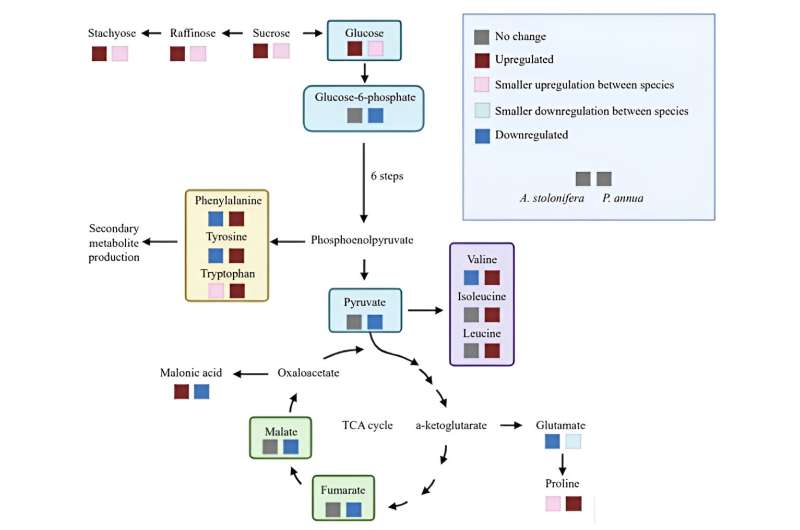This article has been reviewed according to Science X's editorial process and policies. Editors have highlighted the following attributes while ensuring the content's credibility:
fact-checked
trusted source
proofread
Unraveling the metabolic mysteries of turfgrass under heat stress

A research team has identified key metabolic composition differences between annual bluegrass and creeping bentgrass under heat stress, revealing specific metabolites linked to heat tolerance. The findings underscore the potential to use these metabolites as biomarkers for breeding more resilient turfgrass varieties.
This research holds promise for improving turf management strategies, ensuring that golf courses and sports fields can maintain high-quality turf to defend against rising temperatures and climate variability.
Annual bluegrass (P. annua L.) is a popular cool-season turfgrass on golf courses globally, known for its performance in mild climates like the Pacific Northwest, yet struggles with heat stress in warmer transitional zones.
Despite its historical classification as a weed due to its low tolerance to heat, recent shifts in management practices have encouraged its cultivation alongside creeping bentgrass (A. stolonifera). However, P. annua's susceptibility to heat-induced stress leads to early degradation of turf quality, posing challenges for maintaining aesthetically pleasing greens.
A study published in Grass Research on 19 April 2024, aims to explore the physiological and metabolic differences between P. annua and A. stolonifera under heat stress, seeking to enhance the resilience of these grasses in the face of escalating temperatures due to climate change.
In this study, researchers assessed the physiological responses and metabolic changes of P. annua and A. stolonifera under conditions of heat stress. Through rigorous testing, including the measurement of turf quality (TQ), percent green canopy cover, and leaf electrolyte leakage (EL), significant differences were observed in how each species coped with heat stress.
The results demonstrated that A. stolonifera maintained higher TQ and less decline in green canopy cover compared to P. annua, which suffered more pronounced damage. Metabolically, liquid chromatography-mass spectrometry (LC-MS) identified 55 metabolites that changed under heat stress.
Notably, A. stolonifera showed a regulated response with 17 upregulated and 22 downregulated metabolites, contrasting with P. annua's more severe reaction involving 21 upregulated and 26 downregulated metabolites.
These results indicate a stronger resilience in A. stolonifera due to a more favorable metabolic adjustment during heat stress, highlighting potential targets for improving heat tolerance in turfgrasses through metabolic engineering.
According to the study's lead researcher, Bingru Huang, "Understanding the mechanisms for the differential responses of P. annua and A. stolonifera is of great importance for developing strategies to improve turfgrass performance of cool-season grass species in areas with chronic heat stress and anticipated global warming."
In summary, this work not only enhances our understanding of turfgrass biology under climate stressors but also paves the way for future applications in genetic enhancement and turf management practices.
Specifically, the insights gained could lead to the development of genetically modified grasses with improved heat tolerance, offering practical solutions for maintaining green spaces in increasingly warm climates.
More information: Sean McBride et al, Differential Metabolic Responses to Heat Stress Associated with Interspecific Variations in Stress Tolerance for Annual Bluegrass and Creeping Bentgrass, Grass Research (2024). DOI: 10.48130/grares-0024-0011
Provided by Chinese Academy of Sciences

















